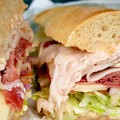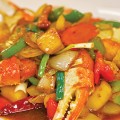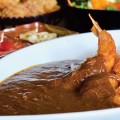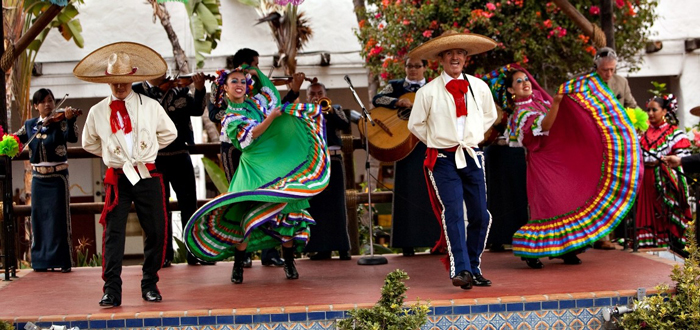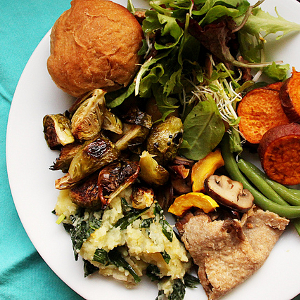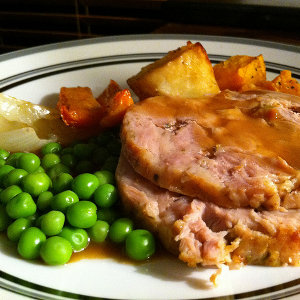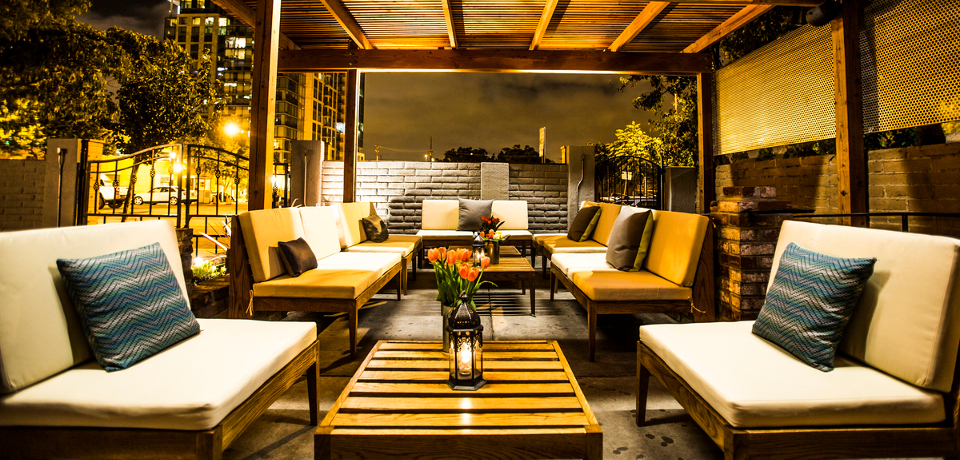Ever wonder why Thai people—who are only about .04 percent of the U.S. population—have such a disproportionately high number of restaurants? When compared to another minority Asian group such as Filipinos, who are nearly 20 times (.66 percent) the population, the numbers are mystifying.
Performing a cursory search of the interwebs in the South Bay, I found well over 50 Thai restaurants and only about 20 Filipino, with a large portion of the latter being bakeries. And yes, I did include Jollibee into that mix to keep my Pinoy buddies happy. The answer to this conundrum is that it’s a not-so-secret Thai government plot to try and drum up tourism through a tactic known as “gastrodiplomacy.”
Evidently, the government has been training chefs at a government funded culinary academy for the better part of two decades, and in 2001 set up a corporation with the goal of opening over 3,000 chain restaurants worldwide in the hopes of becoming the “McDonald’s of Thai food.”
Seriously. Google it.
This might explain why it seems like most Thai menus are carbon copies of each other, and the cuisine is dumbed down for the Western palate. This is where Khaosan Thai, Anukul Phanoong and chef Nestor Felix’s new endeavor, comes into the picture; they are looking to deliver a more authentic Thai culinary experience with dishes that aren’t found on many, if any, other restaurants’ menus.
“I am just trying to deliver an aspect of Thai food that is being put aside by the other Thai restaurants,” Phanoong says. “The idea is to expose our customers to how people actually eat in Thailand and make them understand that Thai food is more than only pad Thai and chicken satay.”
That’s not to say Khaosan’s menu doesn’t have all the aforementioned favorites, but it’s their street food section and specialty northern Thai dishes that really separate them from the herd.
Khaosan is located in a dreary little strip mall that’s almost equidistant from downtown Campbell and downtown Los Gatos. While the exterior needs some love, the interior is welcoming and beautiful in its simplicity. Asterix-shaped chandeliers hang from the ceilings along with thoughtfully placed simple adornments, while a blood red accent wall touts “the pleasure of eating.”
The menu is short, sweet and clearly explains what’s in each dish. I wanted to stick to the more unusual fare and ordered up look chin phing ($16) and the crispy pork belly ($16) from the street food section, and the khao soi chicken ($14) and the hang lay curry ($16) from the northern Thai category.
After placing an order, patrons are encouraged to look through the large kitchen window and watch their orders being prepared. This is an important element for the restaurateurs to help bolster that authentic experience, according to Phanoong.
“I always keep in mind my own experience back in my hometown of going out to eat with my family and watching how our food was cooked right in front of us,” he explains. “Having a window in the restaurant to show our customers what we are cooking for them is just a common set up in Thailand that gives you a sense of home.”
First out were the street foods. The look chin phing are grilled pork meatballs that had a mild flavor but a bit of an unappealing rubbery texture. The pork belly was crispy and pan-fried perfectly. The concomitant sweet chili and cilantro dipping sauces were delightful, but the slight edge went to the latter with its clean, citrusy flavor.
Next out was the hang lay curry, a slow-cooked pork shoulder that’s braised in a gingery, garlicky curry sauce. The meat was fork-tender with a harmonious balance of herbs, spices and heat.
Finally, the khao soi was up, and this was the real star of the show, as it featured thick egg noodles in a rich coconut milk-based peanut curry. While peanut curries are hardly revolutionary, this rendition was about as perfect as it gets. No cloying sweetness from too much coconut milk and just the right hint of peanut flavor made this one of those tastes that one can’t stop craving the next day. My one complaint was the two overcooked drumsticks that really served no purpose other than to take the place of more sauce and noodles.
While the proliferation of Thai cuisine in the last few decades can be partially attributed to government manipulation, there’s no denying it would all be for naught if it didn’t taste fantastic. Fortunately, flavor is one export that they can’t embargo.
Khaosan Thai
2062 Curtner Ave, San Jose
408.677.8061
khaosanthaisj.com
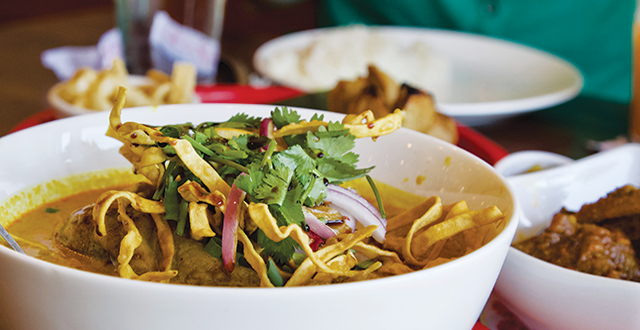
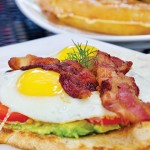 Five To Watch: Burgers, Soul Food, Savory Soup and Brunch
Five To Watch: Burgers, Soul Food, Savory Soup and Brunch  Volleyball, pop music converge at p1440
Volleyball, pop music converge at p1440 
